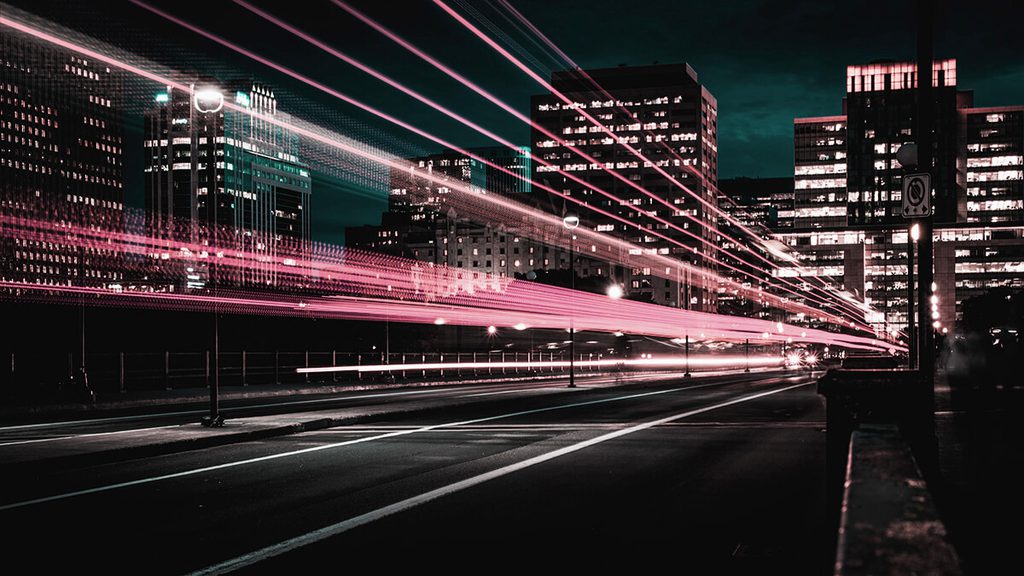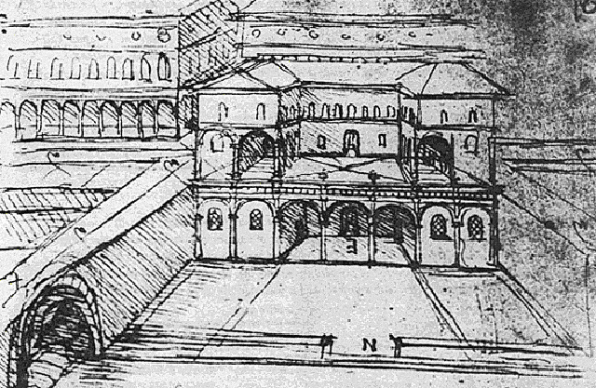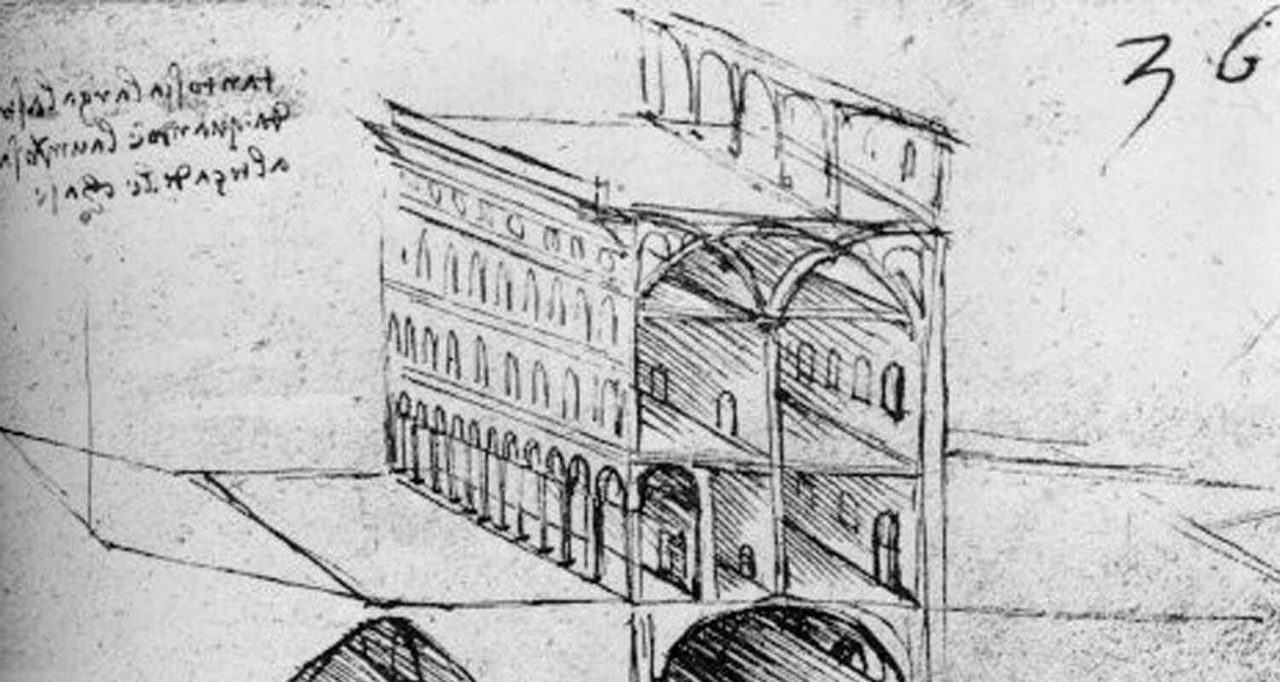
Mobility

Devin Liddell | Principal Futurist

Devin Liddell
Devin designs preferred futures in aviation, automotive, smart cities, personal mobility, space travel, and more.
Connect with Devin on LinkedIn
Leonardo da Vinci survived a series of bubonic plagues that struck Milan between 1484 and 1485. These outbreaks, which killed some 50,000 people—a full third of the city’s population, inspired the Renaissance polymath to design concepts for a future city that he illuminated through a series of drawings and notations completed between 1487 and 1490 (that today can be found in Paris Manuscript B).
At the heart of these concepts is da Vinci’s perspective on shifting the cityscapes of medieval cities like Milan—which were narrow, hard to navigate, dirty, crowded, and entirely conducive to the spread of disease—toward a more modern layout emphasizing aesthetics, cleanliness, and efficiency. To achieve this, da Vinci envisioned two signature features of a future city: a network of canals that would support both commerce and sanitation, and the vertical division of the city itself into as many as three different tiers, each for a different purpose. This vision was radical, and essentially would’ve required either the founding of brand-new cities perfectly located at sites featuring large rivers, or for existing cities to be entirely rebuilt. So, it’s not surprising his ideas went unrealized. However, re-examined today, da Vinci’s thinking is prescient when applied to the challenges facing modern cities. That’s because today’s cities are at a similar pivot point between old and new, between the shape of cities we have now and the shape of cities we’ll need by 2030 when they triple in size and 5 billion people call them home. Da Vinci’s ideas have new currency.

By vertically tiering a city, da Vinci sought to separate areas used for commerce and transport from those used for leisure and living. This arguably constitutes the earliest attempts at zoning, an approach to urban planning that didn’t come into prominent application until well after the Industrial Revolution. In broad brushstrokes, da Vinci envisioned a street-level “lower” tier for carts and horses in what we would understand as a commercial zone. Second, an “upper” tier reserved for pedestrians. Third, a subterranean tier linking the network of canals directly with the basements of buildings, so that goods could be unloaded there versus the lower tier (which would actually be above the canals). To grasp this fully, imagine if today’s UPS trucks, food delivery trucks, and the like were not competing for the same road space as car commuters in downtown cores and instead had their own level below the street to operate, delivering parcels to underground freight elevators.
With these tiers, da Vinci imagined a city that moves differently. The inefficiency of choked medieval streets was a source of efficiency for the bubonic plague, so transforming how people and vehicles moved around was a powerful way to subvert these epidemics. While da Vinci was impelled to reimagine the city in the wake of plagues, modern cities are now challenged by a new threat: climate change. Even here in the U.S., we now have our first climate change refugees, with communities in Virginia and Louisiana already lost to rising seas. Though policy discussions of these problems are highly politicized now, extreme weather and tidal floods are localized and indifferent to political affiliations. So, it’s likely that cities—with their own economies and more unified citizenry—will eventually take the lead on legislation to curb carbon emissions. This is good news because cities provide the best opportunity to maximize the efficiency of energy consumption through shared services, including transportation.
It’s likely that cities—with their own economies and more unified citizenry—will eventually take the lead on legislation to curb carbon emissions.
While da Vinci envisioned vertical city zones, it’s more probable that modern cities will mandate horizontal rezoning—not by the size or the use of buildings—but, instead, based on where types of transport are allowed. City centers will increasingly become car-free, a trend that’s well underway already. Surrounding areas will become electric autonomous-only zones, serviced by shared taxibots and driverless buses. Though goods are unlikely to be delivered via subterranean canals, da Vinci’s intent is sound. So, in modern cities, large drones will fly to city rooftops delivering parcels that will find their way down rather than up.
All of this borrows from ideas da Vinci sketched in the 15th century: a city that moves differently so that it can pivot away from an inefficient and untenable past and toward a more livable, sustainable future.
City planners working to sell citizens on car-free, pedestrian-only downtown cores that curb emissions, decrease congestion, and increase livability could do worse than to brand these areas “Da Vinci Zones.” But there’s another benefit of these areas that we haven’t yet realized: keeping people on foot separated from on-the-move autonomous vehicles.
Those involved in developing autonomous vehicles are posing important questions around pedestrian safety. For example, how will robot cars signal to pedestrians that they “see” them? There are also logistic problems: Cities are mainly designed for vehicles to drive and park—not drive and drop off. Simply put, our finite curbs are not meant for legions of autonomous vehicles pulling over for single-passenger pick-ups and drop-offs. It’ll be a nightmare if our city blocks are transformed into miniature versions of airport arrival and departure drives.
Here, da Vinci’s ideas about street tiers that separate transportation modalities—in his case, carts and horses (essentially the technological predecessors to automobiles)—from pedestrians is hugely instructive. That is, the best way to solve for potentially dangerous interactions between pedestrians and vehicles on shared streets is to not share those streets in the first place. Instead, we’ll need new designs for streets that link pedestrians (and bicyclists, one-wheelers, and the like) in downtown cores with those taxibots and driverless buses they’ll use to move farther outward in the concentric circles of a city’s transportation network.
Redesigning our cities in the face of climate change and entirely new ways of moving around will be a formidable challenge, and this task will not be helped by the inertia of the status quo. But, like da Vinci’s Milan, today’s cities are at a pivot point between old and new. So, the good news is we really have no other choice; medieval cities adapted to their new futures, so we can as well. Fortunately, we have several innovative concepts from one of history’s most prescient thinkers to borrow from.
This article was originally published in Fast Company magazine.